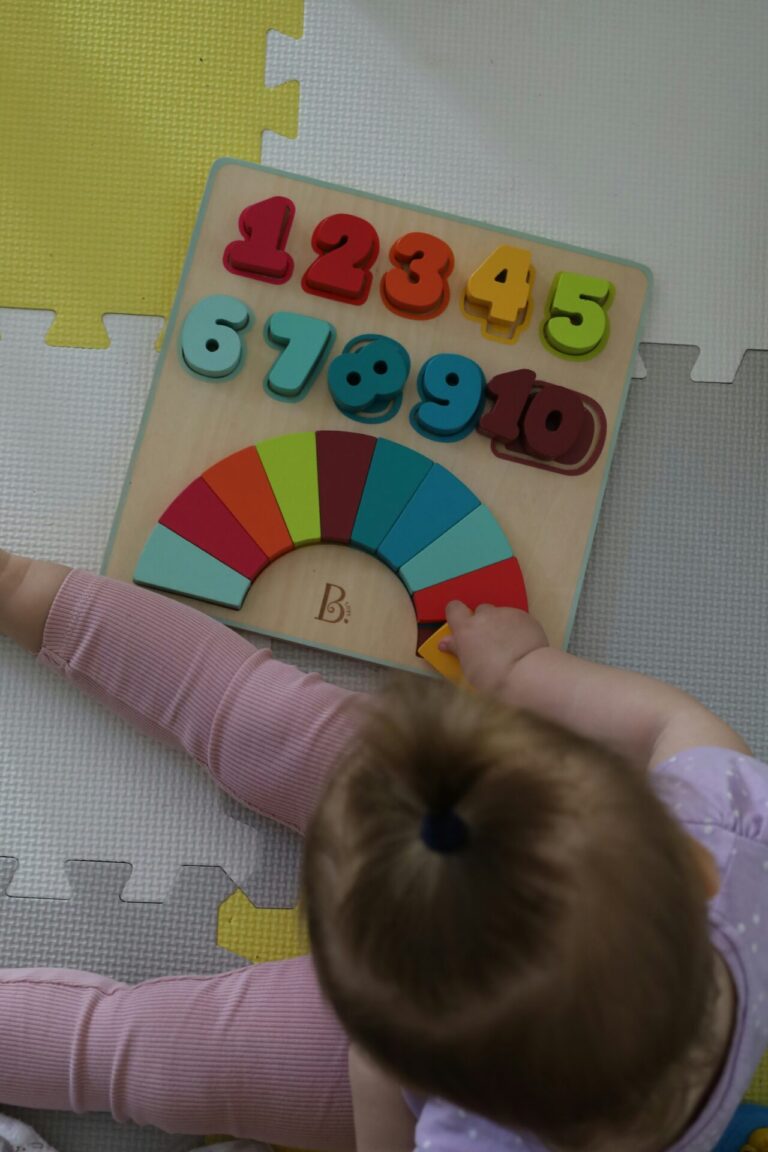Real-Life Math: How to Make Numbers Make Sense for Kids
Mathematics often feels abstract and intimidating for kids, with numbers and equations seeming disconnected from their everyday lives. Yet, math is everywhere—in the groceries they help buy, the games they play, and the world they explore. By connecting math to real-life contexts, parents, educators, and caregivers can make numbers meaningful, engaging, and even fun for children. This comprehensive guide, grounded in educational research and cognitive science, offers evidence-based strategies to help kids see math as relevant and exciting. From hands-on activities to real-world applications, here’s how to make numbers make sense for kids, fostering a lifelong love for math.
Why Real-Life Math Matters for Kids
Math is more than a school subject—it’s a tool for understanding the world. A 2018 study in Journal of Research in Mathematics Education found that contextual learning, where math is tied to real-life scenarios, improves students’ engagement, retention, and problem-solving skills. For kids, real-life math builds confidence, reduces anxiety, and shows that numbers are practical, not just abstract symbols.
The Science Behind Real-Life Math
Real-life math leverages key learning principles:
- Constructivism: Kids learn best by building on prior knowledge and experiences, per a 2017 study in Educational Psychology Review.
- Cognitive Engagement: Connecting math to real-world contexts activates multiple brain areas, enhancing retention, as shown in a 2019 study in Frontiers in Psychology.
- Self-Determination Theory: When kids see math as relevant to their interests, motivation increases, per a 2018 study in Learning and Motivation.
By grounding math in everyday activities, we can help kids develop a deeper understanding and a positive attitude toward numbers.
Step-by-Step Strategies to Make Math Real for Kids
Making math meaningful involves connecting it to children’s lives through hands-on activities, real-world applications, and engaging methods. Below is a detailed, research-backed guide to help parents, educators, and caregivers bring numbers to life for kids.
Step 1: Start with Everyday Activities
Math is embedded in daily routines, from cooking to shopping to playing. A 2016 study in Journal of Early Childhood Research found that integrating math into familiar activities improves conceptual understanding.
- Cooking and Baking:
- Teach fractions by measuring ingredients (e.g., “Use ½ cup of flour”).
- Practice counting by adding items (e.g., “Put in 3 eggs”).
- Explore ratios by adjusting recipes (e.g., doubling a recipe for 4 servings).
- Shopping:
- Introduce budgeting by giving kids a set amount to spend at the store.
- Teach percentages by calculating discounts (e.g., “20% off $10”).
- Practice estimation by rounding prices to the nearest dollar.
- Daily Routines:
- Use time management to teach clocks (e.g., “We leave in 15 minutes—what time will that be?”).
- Count steps or objects during walks to reinforce basic arithmetic.
Action Step: Plan one math-related activity per week, like measuring ingredients while cooking or calculating change during a grocery trip.
Step 2: Use Hands-On Manipulatives
Manipulatives—physical objects like blocks or beads—make abstract concepts concrete. A 2019 study in Journal of Educational Psychology found that hands-on tools improve math comprehension for young learners.
- Counting and Arithmetic: Use blocks, coins, or toys to teach addition and subtraction (e.g., “Take away 2 blocks from 5”).
- Fractions: Cut a pizza or paper into pieces to show fractions (e.g., “1/4 of the pizza is one slice”).
- Geometry: Build shapes with straws or clay to explore area and perimeter.
- Examples:
- For a kindergartner, count Cheerios to practice one-to-one correspondence.
- For a third-grader, use fraction tiles to compare 1/2 and 1/4.
Action Step: Gather simple manipulatives (e.g., beads, paper, or food items) and use them for a 15-minute math activity twice a week.
Step 3: Incorporate Games and Play
Games make math fun and engaging, reducing anxiety. A 2018 study in Educational Researcher found that math games improve fluency and motivation.
- Board Games:
- Monopoly: Teaches money management, addition, and subtraction.
- Uno: Reinforces number recognition and patterns.
- Card Games:
- War: Practice comparing numbers (e.g., “Is 7 greater than 5?”).
- Go Fish: Build counting and matching skills.
- DIY Games:
- Create a number scavenger hunt (e.g., “Find 3 objects in groups of 4”).
- Play “Math Bingo” with addition or multiplication facts.
Action Step: Plan a weekly family game night with a math-focused game, like Monopoly or a DIY number hunt, to reinforce skills.

Step 4: Connect Math to Real-World Problems
Applying math to real-life scenarios makes it relevant. A 2015 study in Journal of Experiential Education found that contextual learning enhances retention and problem-solving.
- Budgeting:
- Give kids a pretend budget to plan a party, teaching addition and subtraction.
- Example: “You have $50 to spend on food and decorations—what can you buy?”
- Measurement:
- Measure furniture or a room to teach length and area (e.g., “How many square feet is your bedroom?”).
- Use a ruler to measure plant growth for a science project.
- Time and Distance:
- Calculate travel time for a family trip (e.g., “If we drive 60 miles at 30 mph, how long will it take?”).
- Track time for daily activities to teach elapsed time.
Action Step: Design one real-world math problem weekly, like budgeting for a small purchase or measuring a backyard space.
Step 5: Use Multisensory Learning
Multisensory learning—engaging sight, sound, and touch—strengthens understanding. A 2019 study in Frontiers in Psychology found that multisensory activities enhance neural connections.
- Visual: Draw graphs, use number lines, or watch math videos (e.g., Numberphile on YouTube).
- Auditory: Sing math songs (e.g., multiplication rhymes) or explain problems aloud.
- Kinesthetic: Build models (e.g., fraction bars with paper) or act out math problems (e.g., jumping to count by twos).
- Example: To teach multiplication, draw arrays (visual), chant times tables (auditory), and arrange objects in groups (kinesthetic).
Action Step: Plan one multisensory math activity per week, like drawing a number line while singing a counting song.
Step 6: Leverage Technology and Apps
Educational technology makes math interactive and accessible. A 2021 study in Computers & Education found that well-designed math apps improve engagement and outcomes.
- Apps:
- Prodigy: A game-based platform for math practice (grades 1-8).
- Khan Academy Kids: Free lessons for younger learners.
- DragonBox: Teaches algebra through puzzles.
- Videos: Use YouTube channels like Math Antics for visual explanations.
- Interactive Tools: Explore virtual manipulatives on sites like the National Library of Virtual Manipulatives.
Action Step: Download one math app (e.g., Prodigy) and use it for 15-20 minutes twice a week to supplement learning.
Step 7: Encourage a Growth Mindset
A growth mindset—believing abilities can improve with effort—reduces math anxiety. Carol Dweck’s research (2016, Mindset) shows that praising effort over innate ability fosters resilience.
- Reframe Challenges: Instead of “I’m bad at math,” encourage “Math is tough, but I’m learning with practice.”
- Celebrate Effort: Praise persistence (e.g., “You worked hard to solve that problem!”).
- Normalize Mistakes: Teach that errors are part of learning (e.g., “This wrong answer helps us find the right one”).
Action Step: After each math activity, have your child write or say one thing they learned or improved, reinforcing a growth mindset.
Step 8: Make Math Social
Collaborative learning boosts engagement and understanding. A 2017 study in Journal of Educational Psychology found that peer discussions enhance math comprehension.
- Family Activities: Solve math problems as a family (e.g., calculate a tip at a restaurant).
- Study Buddies: Pair kids with friends to work on math games or projects.
- Community Events: Attend math fairs or library workshops to connect with others.
Action Step: Organize a weekly “math club” with family or friends to solve a fun problem or play a math game together.
Step 9: Teach Problem-Solving Strategies
Problem-solving is at the heart of math. A 2018 study in Mathematics Teaching in the Middle School found that explicit strategy instruction improves math performance.
- Break It Down: Divide complex problems into smaller steps.
- Use Visuals: Draw diagrams or charts to visualize problems.
- Check Work: Teach kids to double-check answers using inverse operations (e.g., check subtraction with addition).
- Example: For “If 3 apples cost $6, how much do 5 apples cost?”, draw a table to compare quantities and prices.
Action Step: Practice one problem-solving strategy weekly, like drawing a picture to solve a word problem.
Step 10: Build a Consistent Routine
Consistency reinforces math skills. A 2016 study in Learning and Instruction found that structured routines reduce anxiety and improve outcomes.
- Daily Practice: Dedicate 10-15 minutes daily to math, like solving a problem or playing a game.
- Weekly Goals: Set small, achievable goals (e.g., “Learn the 4s multiplication table this week”).
- Balance Fun and Focus: Mix games with focused practice to keep kids engaged.
Action Step: Create a weekly math schedule with 15-minute daily activities, alternating between games, problems, and real-world tasks.
Tailoring Strategies to Different Age Groups
Math activities should match a child’s developmental stage. Here’s how to adapt real-life math for different ages:
Early Elementary (Grades K-2)
- Focus: Build number sense, counting, and basic operations.
- Strategies: Use manipulatives (e.g., blocks), play counting games, and tie math to daily tasks (e.g., counting toys).
- Example: Count steps while climbing stairs or sort snacks by color to teach grouping.
Action Step: Plan a daily 10-minute counting activity, like tallying objects during a walk.
Upper Elementary (Grades 3-5)
- Focus: Master multiplication, division, and fractions.
- Strategies: Use games like Multiplication War, apply fractions to cooking, and introduce budgeting.
- Example: Measure ingredients for a recipe to teach fractions (e.g., “Half of 1 cup is ½ cup”).
Action Step: Incorporate one fraction or multiplication activity weekly, like baking or playing a card game.
Middle School (Grades 6-8)
- Focus: Explore ratios, percentages, and basic algebra.
- Strategies: Use real-world problems (e.g., calculating discounts), introduce apps like DragonBox, and connect to interests.
- Example: Calculate a 15% tip at a restaurant to practice percentages.
Action Step: Plan a weekly real-world problem like budgeting for a hypothetical trip.
Supporting Roles for Parents and Teachers
Parents and teachers are key to making math meaningful:
For Parents
- Model Positivity: Show enthusiasm for math (e.g., “I love figuring this out!”).
- Integrate Math Daily: Point out math in routines, like time or money.
- Provide Resources: Offer manipulatives, apps, or books like Bedtime Math.
Action Step: Discuss one math concept daily during a routine activity, like counting change at the store.
For Teachers
- Incorporate Real-Life Examples: Use projects like designing a budget or measuring a classroom.
- Differentiate Instruction: Adapt activities for different skill levels (e.g., simpler problems for struggling students).
- Encourage Reflection: Have students explain their problem-solving process.
Action Step: Design a weekly class activity that ties math to a real-world scenario like calculating classroom supplies.
Overcoming Common Challenges
Making math real can face hurdles. Here’s how to address them:
1. Math Anxiety
- Issue: Kids may fear math or feel discouraged.
- Solution: Use fun activities and praise effort to build confidence.
- Action Step: Start with easy, engaging tasks (e.g., counting games) to reduce fear.
2. Lack of Interest
- Issue: Kids may find math boring or irrelevant.
- Solution: Tie math to their hobbies (e.g., sports statistics for athletes).
- Action Step: Create a math activity based on your child’s favorite interest, like calculating game scores.
3. Time Constraints
- Issue: Busy schedules limit math practice.
- Solution: Integrate math into existing routines (e.g., cooking or shopping).
- Action Step: Identify one daily routine (e.g., bedtime) for a quick math activity.
Measuring Success
Real-life math leads to:
- Increased Engagement: Kids show enthusiasm for math activities.
- Improved Understanding: Ability to apply math to real-world scenarios.
- Reduced Anxiety: Greater confidence in math skills.
Action Step: At the end of each month, ask your child to explain one math concept they learned and how they used it in real life.

Conclusion: Bringing Numbers to Life
Making math real for kids transforms numbers from abstract concepts into practical tools for life. By integrating math into everyday activities, using manipulatives, playing games, and connecting to real-world problems, you can help children see the relevance and joy of math. With strategies like multisensory learning, growth mindset encouragement, and consistent routines, kids will develop not only math skills but also confidence and curiosity. Whether you’re a parent cooking with your child, a teacher designing a project, or a caregiver playing a math game, you have the power to make numbers make sense. Start today, and watch your child’s love for math grow!

